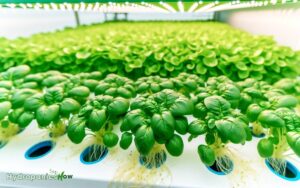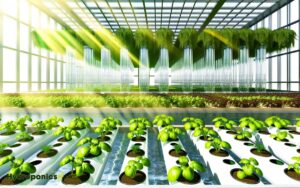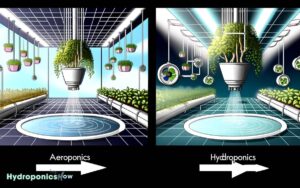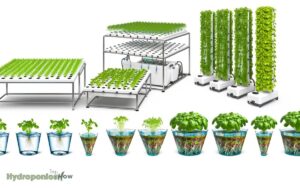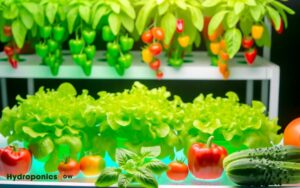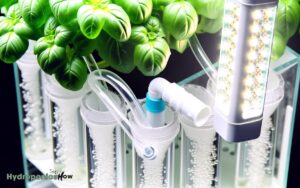Mastering EC in Hydroponics: Optimal Levels for Each Plant Type Explained
Effective electrical conductivity (EC) management is crucial for hydroponics, with specific ranges beneficial for different plant types.
Leafy greens thrive at 1.2 to 2.0 mS/cm, while fruiting vegetables require a higher range of 2.0 to 3.5 mS/cm.
Root vegetables benefit from 1.8 to 2.4 mS/cm, and flowering plants from 1.2 to 2.5 mS/cm. Diverse culinary herbs and exotic plants have varying ideal EC values.
Meticulous EC monitoring ensures precision, addressing nutrient imbalances and maintaining system stability.
Explore specific EC ranges and troubleshooting techniques for enhanced hydroponic success by examining the detailed guidelines. Understanding the ideal EC ranges for different plant types can help optimize nutrient uptake and overall growth. Additionally, recognizing the differences between open vs closed hydroponic systems allows growers to adjust nutrient management strategies accordingly. Regular monitoring and adjustments ensure a balanced environment, preventing issues like nutrient deficiencies or toxic buildup.
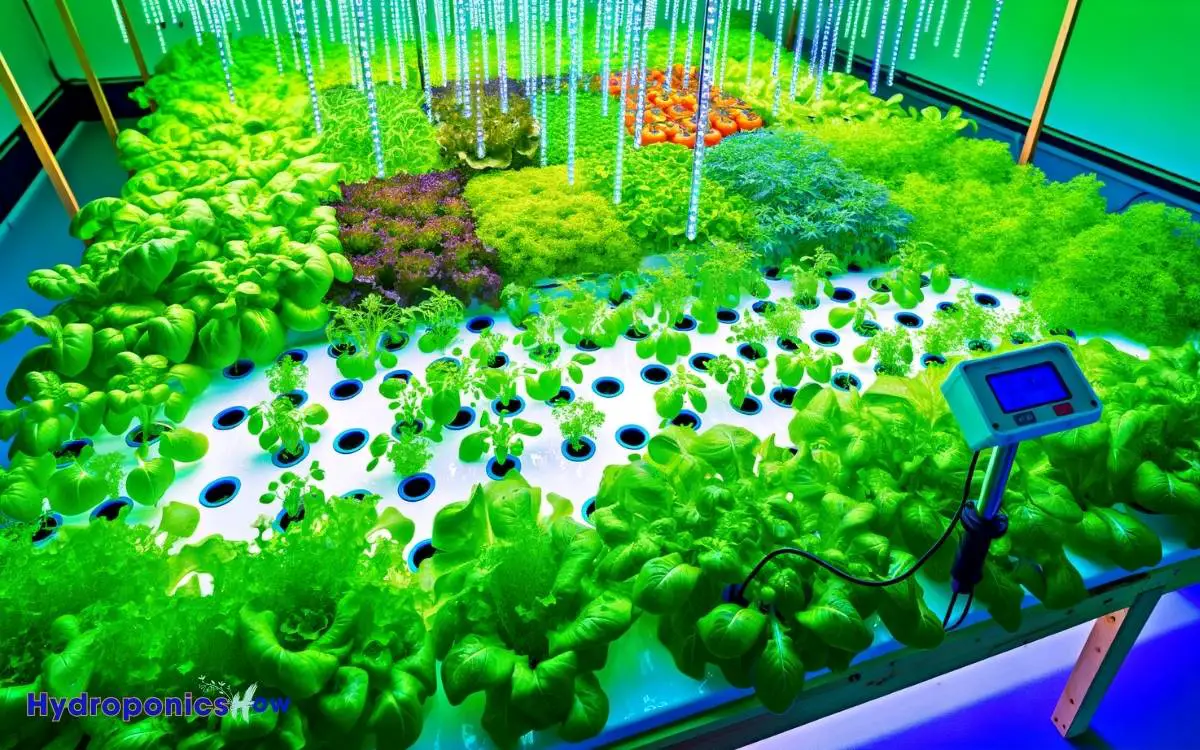
Key Takeaways
Leafy Greens
Leafy greens, such as lettuce and spinach, typically require an Electrical Conductivity (EC) range of 1.2 to 2.0 mS/cm in hydroponic systems for ideal growth.
This specific EC range guarantees ideal nutrient uptake, as these plants are sensitive to both nutrient deficiencies and toxicities.
Studies indicate that maintaining the EC within this range maximizes photosynthetic efficiency and biomass production. Deviations from this range can result in stunted growth or nutrient imbalances, affecting overall yield quality.
Regular monitoring and adjustments of the nutrient solution’s EC are essential to sustain the delicate balance required for these crops.
Precision in EC management is fundamental for achieving consistent, high-quality harvests of leafy greens in controlled hydroponic environments.
Fruiting Vegetables
While leafy greens benefit from a specific EC range, fruiting vegetables such as tomatoes, peppers, and cucumbers typically require a slightly higher EC range of 2.0 to 3.5 mS/cm to optimize nutrient uptake and fruit development.
This elevated EC range supports the increased nutrient demands of fruiting stages, ensuring adequate levels of potassium, calcium, and other essential minerals. Research indicates that maintaining this EC range can greatly enhance fruit yield and quality.
However, it is important to monitor and adjust the EC levels regularly, as fluctuations can lead to nutrient imbalances or deficiencies.
Implementing precise EC management can result in improved fruit size, flavor, and overall plant health, ultimately leading to more successful hydroponic cultivation of fruiting vegetables.
Root Vegetables
Root vegetables require a specific electrical conductivity (EC) range between 1.8 to 2.4 mS/cm to optimize nutrient uptake for robust growth.
Accurate EC management is vital as it directly affects nutrient absorption rates, influencing root development and overall plant health.
Monitoring and adjusting the EC within this ideal range guarantees efficient nutrient utilization, thereby enhancing the yield and quality of root vegetables in hydroponic systems.
Ideal EC Range
For ideal growth of root vegetables in hydroponic systems, the recommended Electrical Conductivity (EC) range typically falls between 1.8 and 2.4 mS/cm.
This range provides an excellent balance of nutrient availability and osmotic conditions, essential for the development of robust root structures.
Empirical studies indicate that maintaining an EC within this specific range enhances nutrient uptake efficiency and promotes healthy growth rates. Deviations outside this range can lead to nutrient deficiencies or toxicities, adversely affecting plant health.
Consistent monitoring and adjustments are imperative to sustain this ideal EC range. Precision in maintaining the EC is particularly critical for hydroponic root vegetables, where soil-buffering capacity is absent, making the root zone more sensitive to nutrient imbalances.
Nutrient Absorption Rates
Ideal nutrient absorption rates in hydroponic root vegetables depend on maintaining specific environmental parameters, including pH, temperature, and EC levels.
These parameters directly impact the efficiency of nutrient uptake, affecting the growth and yield of crops such as carrots, radishes, and beets.
Empirical data suggests the preferred pH ranges from 5.8 to 6.2, temperatures between 18-22°C, and Electrical Conductivity (EC) values from 1.8 to 2.4 mS/cm.
| Root Vegetable | Preferred pH | EC Range (mS/cm) |
|---|---|---|
| Carrots | 5.8 – 6.2 | 1.8 – 2.2 |
| Radishes | 5.8 – 6.2 | 1.8 – 2.4 |
| Beets | 5.8 – 6.2 | 1.8 – 2.4 |
These parameters help ensure that nutrient salts are adequately dissolved, facilitating efficient root absorption and robust plant development.
Culinary Herbs
When cultivating culinary herbs hydroponically, maintaining an ideal electrical conductivity (EC) range is essential for ensuring robust growth and maximizing flavor profiles.
Ideal EC levels vary by herb type; for instance, basil thrives within an EC range of 1.0 to 1.6 mS/cm, while cilantro prefers 1.2 to 1.8 mS/cm.
Rosemary and thyme are more tolerant to higher EC values, flourishing between 1.8 to 2.2 mS/cm. Monitoring and adjusting EC levels help guarantee nutrient uptake efficiency, preventing deficiencies or toxicities.
Consistent EC management, coupled with pH stability, is crucial for optimizing the phytochemical composition and aromatic intensity of the herbs.
Regular calibration of EC meters and adherence to specific nutrient formulations further enhance hydroponic herb cultivation outcomes.
Flowering Plants
Maintaining ideal electrical conductivity (EC) levels is essential for the successful hydroponic cultivation of flowering plants, as it directly influences nutrient availability and uptake.
Peak EC levels guarantee that plants receive the right concentration of dissolved salts, promoting healthy growth and vibrant blooms.
Research indicates that most flowering plants thrive within an EC range of 1.2 to 2.5 mS/cm, depending on the specific species and growth stage.
Key considerations include:
- Species-Specific Requirements: Different flowering plants have varying EC tolerances.
- Growth Stage Variations: EC levels may need adjustment during vegetative and flowering phases.
- Water Quality: Pure water with low EC is essential for accurate nutrient mixing.
- Regular Monitoring: Frequent EC measurements help maintain an optimal nutrient balance.
Understanding these factors is critical for maximizing flowering plant performance in hydroponic systems.
Exotic Plants
Understanding the ideal EC levels for hydroponic cultivation of exotic plants is equally important, as these species often have unique nutrient requirements and tolerances compared to more common flowering plants.
Maintaining appropriate Electrical Conductivity (EC) guarantees ideal growth and health.
For example, orchids thrive at lower EC levels, while carnivorous plants require even more specific ranges.
Below is a table detailing recommended EC levels for various exotic plants:
| Plant Type | Ideal EC Range (mS/cm) | Notes |
|---|---|---|
| Orchids | 0.8 – 1.2 | Sensitive to high EC levels |
| Carnivorous Plants | 0.5 – 1.0 | Requires careful monitoring |
| Bromeliads | 1.0 – 1.5 | Moderate nutrient needs |
| Bonsai Trees | 1.2 – 1.8 | Requires consistent EC levels |
| Exotic Ferns | 1.0 – 1.4 | Prefers stable, low EC environments |
Accurate EC management is essential for maximizing growth and ensuring the health of these specialized plants in hydroponic systems.
Troubleshooting EC Issues
Successful troubleshooting of EC issues in hydroponic systems requires a comprehensive understanding of common EC problems, such as nutrient imbalances and salt buildup.
Precise adjustment of nutrient levels based on real-time EC readings can mitigate these issues and optimize plant growth.
Ongoing monitoring of system health through regular EC checks guarantees the stability and efficiency of the hydroponic environment.
Common EC Problems
Frequent deviations from the ideal electrical conductivity (EC) range can lead to nutrient imbalances and stunted growth in hydroponic systems. Precise monitoring and adjustment are essential to maintain peak plant health.
Common EC problems include:
- EC Drift: Gradual changes in EC can result from nutrient solution evaporation or plant uptake discrepancies, necessitating frequent recalibration.
- Nutrient Lockout: Excessively high EC levels can cause nutrient lockout, where essential elements become unavailable to the plants.
- Salt Buildup: Accumulated salts from fertilizers can increase EC beyond peak levels, impairing root function and nutrient absorption.
- Water Quality Variability: Inconsistent water quality, such as fluctuations in source water EC, can disrupt the nutrient balance, demanding stringent quality control.
Addressing these issues is essential for maintaining system stability and ensuring healthy plant growth.
Adjusting Nutrient Levels
Adjusting nutrient levels in hydroponic systems requires precise calibration to address deviations in EC, ensuring ideal plant health and growth.
Consistent monitoring of electrical conductivity (EC) reveals nutrient imbalances; high EC often indicates excessive nutrient concentration, leading to osmotic stress, while low EC suggests nutrient deficiency.
To rectify high EC, dilute the nutrient solution with pure water until the desired EC is achieved. Conversely, to correct low EC, incrementally add a concentrated nutrient solution.
Implementing these adjustments requires accurate measurement tools such as calibrated EC meters.
Studies indicate that maintaining an ideal EC range tailored to specific plant types enhances nutrient uptake efficiency, thereby optimizing photosynthesis, transpiration, and overall growth metrics.
Monitoring System Health
Guaranteeing the health of a hydroponic system necessitates meticulous monitoring and troubleshooting of electrical conductivity (EC) levels to preemptively address potential nutrient imbalances.
Accurate EC readings are crucial for maximizing plant growth and preventing issues such as nutrient lockout or deficiency.
Key steps for effective EC management include:
- Regular Monitoring: Conduct daily EC measurements using calibrated meters to track changes.
- Data Logging: Record EC values consistently to identify trends and deviations.
- Calibration: Regularly calibrate EC meters to ensure accuracy and reliability.
- System Maintenance: Clean and inspect the hydroponic system to prevent biofilm buildup, which can alter EC readings.
Consistent application of these practices guarantees the precise nutrient delivery that hydroponic systems require for peak plant health.
Conclusion
Ironically, while the precise control of electrical conductivity (EC) in hydroponic systems is paramount for best plant growth, the complexities and variances required by different plant types underscore the challenges faced by cultivators.
Leafy greens, fruiting vegetables, root vegetables, culinary herbs, flowering plants, and exotic species each demand specific EC levels, a proof of nature’s intricate demands even in a controlled environment.
Despite technological advancements, achieving the ideal EC remains a nuanced endeavor, illustrating the perpetual dance between human ingenuity and botanical requirements.

